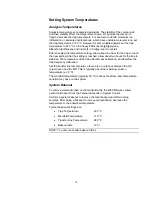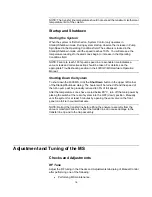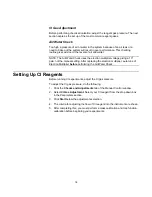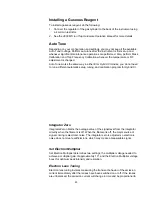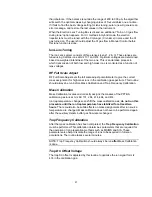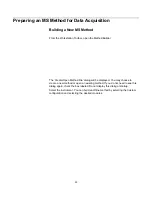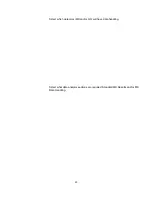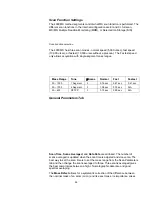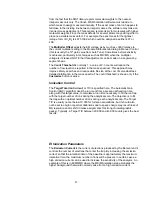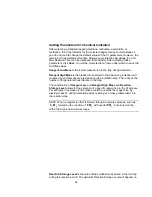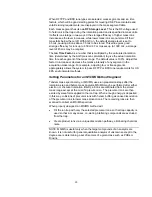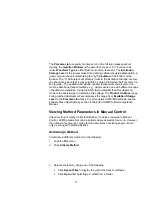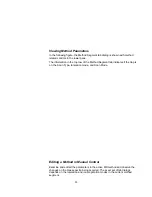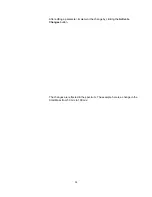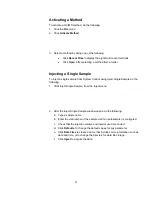
29
the molecular ion of the analyte. Generally, one should use higher Reaction
Storage Levels for higher molecular ions, without raising the storage level to
cause ejection of CI reagent ions. For example, the molecular ion of the analyte
is 352 m/z. Using acetonitrile, raising the RF storage level to 25 m/z may give
better sensitivity than the default of 19 m/z. If the CI storage level is raised, the
Ejection Amplitude will have to be increased.
Ejection Amplitude
(V) is a voltage that corresponds to a low mass ejection
cutoff that is slightly higher than the Reagent High Mass. This voltage actively
ejects unwanted ions (i.e., not reagent ions) that are produced during ionization.
Generally, higher CI storage values require higher ejection voltages. The voltage
should not be set so high as to cause the ejection of CI reagent ions.
Max Reaction Time
is the maximum time that reagent gas ions are allowed to
react with sample molecules to form ions. The maximum reaction time can be set
to any value from 1 to 2000 milliseconds. The typical reaction time is 100
milliseconds
For details on how to optimize these parameters, or on how to set up for non-
standard reagents, refer to the 4000 GC/MS Software Operation Manual.
NOTE: Be aware that if you do change a CI parameter and set it incorrectly, you
may not be able to operate properly in CI.
Full Scan Parameters
Each MS scan type has different parameters that need to be specified. The
following are examples of the two most common scan types used in the Internal
configuration; Full Scan and MS/MS. Detailed information on these, and the other
scan function parameters can be found in the
4000 GC/MS Software Operation
Manual
.
Full Scan data acquisition is used for general-purpose GC/MS analysis. In the
Mass Range area (upper left), enter
Low Mass
and
High Mass
values to specify
the full scan mass range. This is the most common scan type for the 4000 MS.
The mass range also determines the scan range of the AGC calculation.
The Tune field specifies how the mass range is scanned. There are three
specified tune types; Auto, DFTPP, and BFB. Under the Auto tune type each EI
scan is divided by default into four mass segments: 10 to 99 m/z, 100 to 249 m/z,
250 to 399 m/z and 400 to 1000 m/z. Under these conditions, the
RF Storage
Level (m/z)
and the
Ionization Time Factor (%)
can be adjusted on a mass
segment basis.
Содержание 4000 MS
Страница 2: ......

